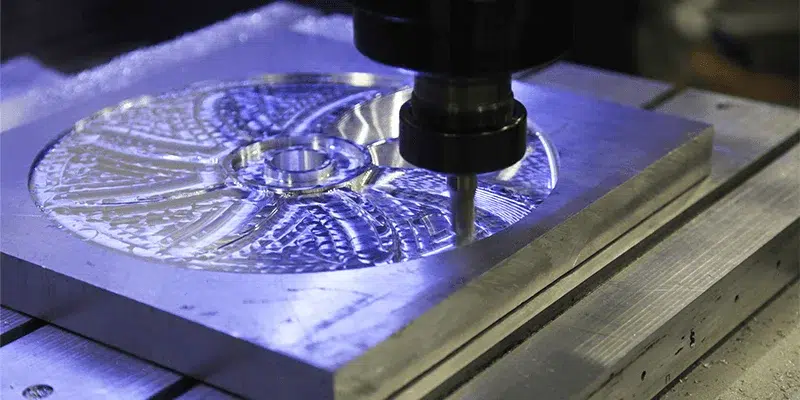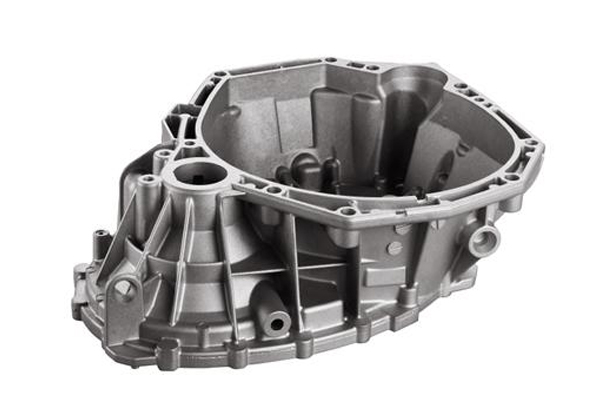A step-by-step guide to Aluminum Casting processes
Understanding the Benefits and Varieties of Aluminum Castings in Sector
Aluminum castings have actually come to be increasingly vital throughout numerous industries due to their distinct residential or commercial properties and manufacturing versatility. Their lightweight and corrosion-resistant nature makes them suitable for demanding applications. Different casting approaches permit precise and elaborate styles. As sectors evolve, understanding the variety of light weight aluminum spreading alternatives and their advantages is vital. This expedition increases concerns about their future duty in production and sustainability. What lies in advance for aluminum in these industries?
The Essentials of Aluminum Casting Processes
Although aluminum spreading procedures differ in strategy, they all share an usual objective: to change molten light weight aluminum into exact shapes and elements. The key methods of aluminum spreading include sand spreading, die casting, and financial investment casting. In sand casting, molds are created making use of sand, permitting intricate designs but commonly resulting in a rough surface area finish. Die casting employs high-pressure shot of molten light weight aluminum right into steel mold and mildews, producing high accuracy and smooth surfaces, ideal for mass manufacturing. Investment spreading, or lost-wax casting, includes producing a wax pattern covered with a ceramic shell, supplying phenomenal detail and dimensional accuracy. Each method has its particular applications and considerations, including expense, production volume, and intricacy of the shapes created. Comprehending these fundamental methods is necessary for industries that rely upon light weight aluminum castings to satisfy their layout and functional requirements.
Key Advantages of Utilizing Aluminum Castings
Aluminum castings offer numerous benefits that make them a recommended option in various industries. Among the key benefits is their light-weight nature, which enables less complicated handling and lowered shipping costs. This particular adds to boosted power performance, particularly in automotive and aerospace applications. Furthermore, aluminum shows excellent rust resistance, expanding the lifespan of elements and decreasing upkeep requirements.
An additional benefit is the flexibility of light weight aluminum castings, which can be molded right into complicated shapes, making it possible for cutting-edge styles that traditional materials might not fit. The thermal and electric conductivity of light weight aluminum likewise makes it optimal for applications calling for warmth dissipation or reliable electric links. Aluminum castings are recyclable, aligning with sustainability objectives and reducing environmental influence. Overall, the combination of toughness, toughness, and flexibility makes aluminum castings a crucial part in modern production techniques across numerous markets.
Typical Sorts Of Aluminum Castings
Aluminum castings are created through different approaches, each matched for various applications and requirements. Amongst one of the most common techniques are sand casting, which supplies adaptability and cost-effectiveness, and pass away casting, recognized for its precision and effectiveness. Recognizing these processes is important for picking the proper casting technique for specific commercial requirements.
Sand Casting Refine
A considerable part of light weight aluminum castings in industry is produced via the sand casting procedure, which is renowned for its versatility and cost-effectiveness. This method entails creating a mold and mildew from a sand mixture, enabling the manufacturing of intricate forms and huge components. Sand spreading is particularly advantageous for tiny to medium-sized production runs, as it requires marginal initial investment in tooling. The process starts with pattern making, adhered to by mold and mildew preparation, putting liquified light weight aluminum, and lastly, cooling down and completing. The high thermal conductivity of light weight aluminum warranties even cooling down, lowering the risk of flaws. Sand casting stays a recommended selection for producers looking for efficiency and adaptability in their light weight aluminum casting applications.
Die Casting Techniques
Die casting methods represent an extremely reliable approach for creating aluminum castings, especially suited for high-volume production. These strategies largely include 2 usual types: warm chamber and cool chamber die spreading. In hot chamber die casting, the molten light weight aluminum is infused right into the mold from a tank that is warmed, making it ideal for low-melting-point alloys. Conversely, cool chamber pass away casting involves putting the molten light weight aluminum into a different chamber before injection, which suits greater melting-point products. Both approaches offer accuracy fit complex geometries and attaining outstanding surface area finishes. Additionally, pass away casting is recognized for its quick cycle times, reducing production costs while keeping consistency in high quality across large quantities of parts.
Applications in the Automotive Industry
Transforming automobile style and efficiency, light weight aluminum castings play a vital role in the automotive industry. These castings add considerably to weight reduction, improving fuel performance and total lorry characteristics. Secret applications include engine blocks, transmission housings, and suspension parts, where their light-weight nature and strength are essential.
Aluminum castings likewise enable for complicated geometries, making it possible for makers to produce complex designs that enhance air flow and decrease drag. This ability is especially beneficial in electrical and hybrid automobiles, where performance and efficiency are paramount.
In addition, the deterioration resistance of light weight aluminum prolongs the life expectancy of vehicle parts, decreasing maintenance costs and improving car integrity. The convenience of light weight aluminum castings supports both mass production and custom-made applications, making them a favored option among vehicle designers and developers. Aluminum Casting. As the market proceeds to introduce, light weight aluminum castings will certainly continue to be an essential element in the search of sophisticated automobile innovations
Aerospace Market Use
In the aerospace sector, aluminum castings are indispensable to the style and capability of airplane elements. These castings are used in numerous applications, consisting of engine parts, architectural elements, and indoor installations. Their light-weight nature contributes to enhanced fuel efficiency and total performance, which is essential in aerospace design.
Aluminum castings additionally provide excellent strength-to-weight proportions, allowing manufacturers to create elaborate designs without compromising structural stability. The ability to produce complex geometries makes aluminum casting a favored choice for components that need accuracy and dependability.
Additionally, aluminum's resistance to rust enhances the long life of aerospace parts, minimizing maintenance expenses and enhancing safety and security (Aluminum Casting). The casting process enables high-volume production, fulfilling the market's needs for efficiency. On the whole, aluminum castings play an essential duty ahead of time aerospace technology and enhancing aircraft style, adding to you can try these out the sector's ongoing advancements

Advantages Over Various Other Materials
Aluminum castings provide substantial advantages over other products, making them a recommended selection in different industries. Among the primary advantages is their light-weight nature, which contributes to decreased energy consumption and boosted performance in applications such as automobile and aerospace. In addition, aluminum exhibits exceptional corrosion resistance, permitting for long term durability and minimized maintenance expenses.
The product's exceptional thermal and electrical conductivity further boosts its appeal, specifically in applications needing warmth dissipation or effective power transfer. Aluminum Casting. Aluminum castings additionally provide superb dimensional stability, ensuring precise tolerances and decreasing the possibility of problems during the manufacturing procedure
The versatility of aluminum permits for intricate shapes and detailed designs, which can be attained with different casting methods. This versatility makes aluminum a useful alternative for producers aiming to innovate while keeping cost-effectiveness and quality. In conclusion, light weight aluminum castings stick out due to their distinct mix of homes that satisfy diverse commercial needs.
Future Patterns in Aluminum Casting Innovation
Future fads in aluminum spreading technology are significantly concentrated on automation and the growth of innovative alloys. Automation stands to improve effectiveness and accuracy in casting procedures, reducing labor expenses and improving item uniformity. Simultaneously, improvements in alloy solutions guarantee to expand the variety of applications for light weight aluminum castings, dealing with specific performance needs in different sectors.
Automation in Casting Processes

Advanced Alloys Development
With the recurring development of product scientific research, the growth of innovative alloys is readied to change light weight aluminum spreading technology noticeably. These ingenious alloys are created to improve mechanical homes, corrosion resistance, and thermal stability, accommodating diverse industrial applications. Scientists are concentrating on crossbreed alloys that incorporate aspects such as magnesium, silicon, and zinc to accomplish peak efficiency. In addition, improvements in computational modeling and simulation are enabling the prediction of alloy habits under various problems, simplifying the style procedure. The combination of reusing innovations is likewise coming to be important, permitting producers to create high-performance aluminum castings while minimizing environmental impact. As these fads proceed, the aluminum spreading market is most likely to witness significant renovations in performance, sustainability, and product top quality.
Regularly Asked Questions
Just How Is Aluminum Casting Eco-friendly?
The question of light weight aluminum casting's ecological friendliness emerges from its recyclability and lower energy consumption compared to various other metals. Additionally, improvements in sustainable techniques even more enhance its eco-friendly online reputation within making procedures.
What Is the Common Lifespan of Aluminum Castings?
The regular life-span of light weight aluminum castings differs based on application and setting, normally ranging from numerous years to decades. Elements such as exposure to harsh components and mechanical stress can substantially influence their sturdiness and longevity.
Can Aluminum Castings Be Reused?
Aluminum castings can certainly be recycled. This process significantly reduces waste and preserves sources, allowing manufacturers to recycle products efficiently. Recycling light weight aluminum castings adds to sustainability and decreases the ecological influence linked with light weight aluminum manufacturing.
What Are the Usual Problems in Aluminum Castings?
Common problems in light weight aluminum castings include porosity, shrinking, imbalance, and surface click for info flaws. These issues can arise from inadequate putting strategies, inappropriate alloy make-up, or inadequate air conditioning, inevitably affecting the top quality and performance of my response the end product.
How Do I Pick the Right Aluminum Casting Process?
Picking the best aluminum casting process requires assessing manufacturing volume, part complexity, and preferred homes. Elements such as expense, lead time, and product characteristics likewise affect the choice, making certain ideal outcomes for particular applications.